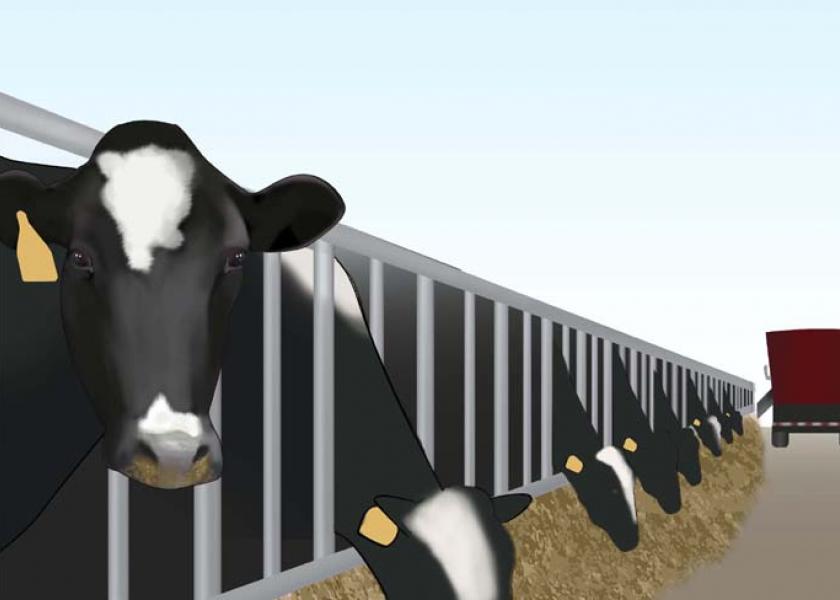Address Competition for Feed, Water

While competition is great on the football field or basketball court, dairy cows forced to compete for feed and water is a no-win proposition, says John Tyson, a Pennsylvania State University agricultural engineer.
“Research shows that dairy cattle fed a total mixed ration typically consume their dairy dry matter in 3 to 5 hours per day, spread between 7 to 12 meals per day,” he says. “However, when cows must compete at the feed bunk, the same research shows they consume fewer, larger meals with a reduced feeding time.
“That’s the opposite of what you want cows to do to maximize dry matter intake,” he says. Plus, fewer, larger meals can create slug feeding episodes which can lead to digestive upsets.
The first place to reduce competition is to ensure adequate bunk space. The general rule of thumb is to provide 24” of bunk space per cow. But Tyson notes the modern Holstein is easily a few inches wider than that. “For all cows in a group to comfortably eat at the same time, feed space needs to be closer to the 28” to 30” per cow range,” he says.
The feed table surface area also needs to easily cleaned so that any refused or spoiled feed can be removed daily.
Surfaces like tile, poly, stainless steel or even some concrete additives that are resistant to silage acid can keep feed surfaces smooth after years of use, he says.
The feed barrier also needs to be appropriately installed. Cows can exert up to 500 pounds of pressure reaching for feed. “Only 225 pounds of pressure can cause tissue damage to their necks and shoulders,” notes Tyson.
If you have post-and-rail barrier, the rail should be set at 48” above the cow’s feet and 4 – 8” ahead of the feed curb. Headlocks should be tilted 15 to 20° forward to allow cows better reach and comfort, says Tyson.
Access to fresh feed is also critical. So delivering fresh feed multiple times per day will motivate feeding behavior. Frequent push-ups, particularly within the first 2 hours of feeding when most cows are feeding, are needed to keep fresh feed within reach.
Water availability is also critical because drinking water provide 80 to 90 percent of a cow’s total water needs. (The rest comes from moisture in the feed.) “Waterers in freestall or loose housing should have a large, open surface area to drink from, presented by 24 to 32” above the floor,” says Tyson.
Water depth should be at least 3”, with a capacity of 30 to 50 gallons. The minimum fill rate should be 10 gallons per minute if more than one cow can drink from the waterer. Provide at least two waterers per group, spaced a maximum of 60 to 80’ apart.







